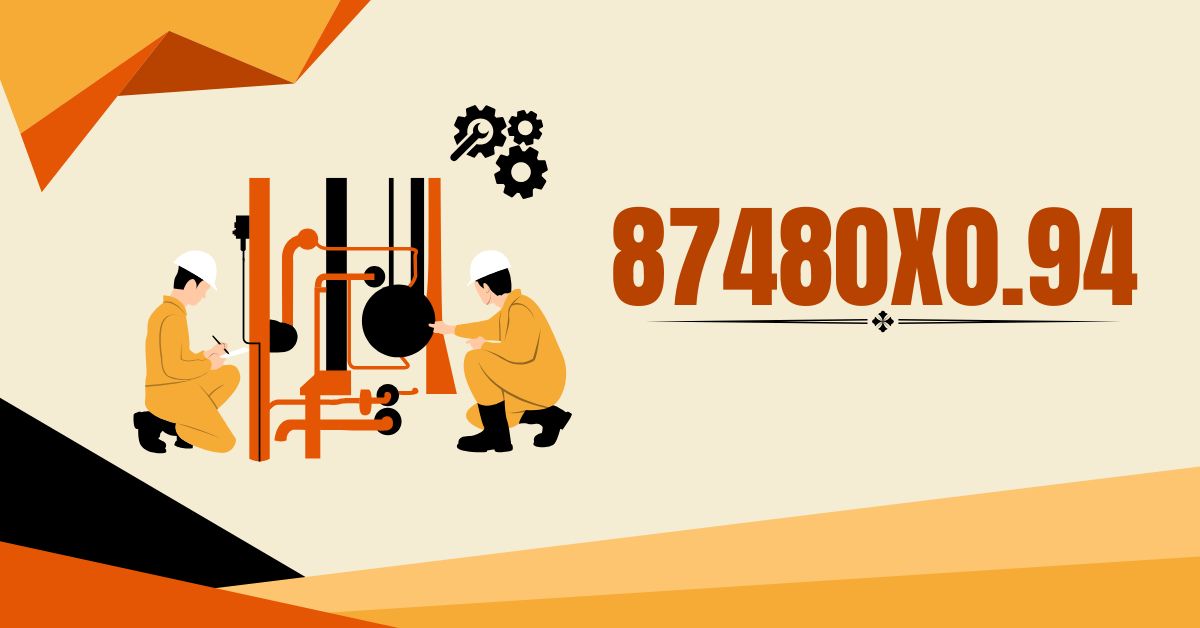In the ever-evolving world of industrial processes, precision and efficiency are paramount. One term that has recently gained traction in the industry is 87480×0.94. This seemingly complex code holds significant importance, especially for those invested in optimizing production lines and ensuring quality control. This article explores the concept of 87480×0.94, its relevance in modern industrial settings, and how it contributes to greater efficiency and productivity.
What is 87480×0.94?
87480×0.94 is a reference to a specific measurement or ratio commonly used in industrial applications to indicate precision, tolerance levels, or specific calibration settings. This code is critical for maintaining the exact standards required in high-precision industries such as aerospace, automotive, and electronics. The consistency implied by this code ensures that machinery operates within the tight specifications needed to produce high-quality products.
The Importance of Precision in Industry
Precision is the backbone of modern manufacturing. Industries rely on precise measurements to ensure that every component meets exact specifications. Deviations, even minuscule ones, can lead to product failures, reduced efficiency, and increased costs. 87480×0.94 represents the meticulous attention to detail that industries must maintain to produce reliable and safe products.
Applications of 87480×0.94 in Manufacturing
In manufacturing, 87480×0.94 is often used as a benchmark for calibrating equipment and machinery. It helps manufacturers maintain uniformity and consistency across production batches. For example, in the automotive industry, where parts must fit together with exact precision, this standard ensures that each component is manufactured to the correct dimensions, reducing the risk of assembly issues or product recalls.
Enhancing Quality Control
Quality control is a critical aspect of any production process, and 87480×0.94 plays a significant role in this domain. By adhering to this standard, companies can detect and correct deviations early in the production cycle, minimizing waste and improving overall product quality. The use of such precise measurements helps in identifying faults and maintaining the integrity of the production process.
Role in Automation and Robotics
Automation and robotics are transforming the manufacturing landscape, and 87480×0.94 is integral to these advancements. Automated systems rely heavily on accurate data and precise measurements to function correctly. This standard ensures that robotic arms and automated machinery operate within their intended parameters, leading to smoother operations and fewer errors.
Impact on Efficiency and Cost Reduction
Efficiency is a top priority for any industry looking to stay competitive. Implementing 87480×0.94 in production processes can significantly reduce downtime and increase output. By maintaining strict adherence to this measurement, companies can streamline operations, reduce material waste, and lower production costs. This ultimately leads to higher profitability and a stronger competitive edge in the market.
Case Study: Aerospace Industry
The aerospace industry, known for its stringent standards and safety requirements, heavily relies on precise measurements like 87480×0.94. Components used in aircraft must meet exact specifications to ensure safety and reliability. The adoption of this standard in aerospace manufacturing ensures that every part, from small fasteners to large structural components, meets the necessary criteria for performance and safety.
Integration with Digital Technologies
The rise of digital technologies has further amplified the importance of precise measurements like 87480×0.94. Advanced sensors and IoT devices collect and analyze data in real time, providing insights into production processes. By integrating this standard into digital systems, manufacturers can achieve higher levels of accuracy and efficiency, paving the way for smart factories and Industry 4.0 advancements.
Challenges in Implementation
Despite its benefits, implementing 87480×0.94 across all production lines can present challenges. Companies may face initial costs associated with upgrading equipment and training staff to understand and apply this standard. Additionally, maintaining such high levels of precision requires continuous monitoring and regular calibration of machinery, which can be resource-intensive.
Training and Workforce Development
To effectively utilize 87480×0.94, companies must invest in workforce development. Training programs that focus on the importance of precision and how to achieve it are essential. Employees need to understand the significance of adhering to this standard and how it impacts the overall production process. Skilled workers are better equipped to maintain machinery, identify potential issues, and ensure consistent quality.
Future Prospects of 87480×0.94
As industries continue to evolve, the importance of precise measurements like 87480×0.9’4 will only grow. Future advancements in manufacturing technology will likely require even tighter tolerances and greater accuracy. This standard will remain a cornerstone of quality control and efficiency, driving innovation and ensuring that industries meet the ever-increasing demands of consumers and regulators.
Conclusion
87480×0.94 is more than just a numerical code; it represents the commitment to precision, efficiency, and quality that modern industries must uphold. From manufacturing and aerospace to automation and robotics, this standard plays a crucial role in ensuring that products meet exact specifications and perform reliably. By embracing 87480×0.9’4 , companies can achieve higher efficiency, reduce costs, and maintain a competitive edge in the global market.
FAQS
What does 87480×0.94 represent in industrial terms?
87480×0.9’4 represents a specific measurement or standard used to ensure precision and consistency in industrial processes.
How does 87480×0.94 improve manufacturing efficiency?
By maintaining strict adherence to this measurement, manufacturers can reduce waste, minimize errors, and streamline production processes, leading to increased efficiency.
Why is 87480×0.94 important in the aerospace industry?
The aerospace industry requires exact specifications for safety and reliability. 87480×0.9’4 ensures that components meet these stringent standards, reducing the risk of failures.
What challenges are associated with implementing 87480×0.94?
Challenges include the initial cost of upgrading equipment, training staff, and maintaining continuous monitoring and calibration to adhere to the standard.
How does 87480×0.94 integrate with digital technologies?
It integrates with digital technologies by providing accurate data for advanced sensors and IoT devices, enhancing real-time monitoring and decision-making in smart factories.

